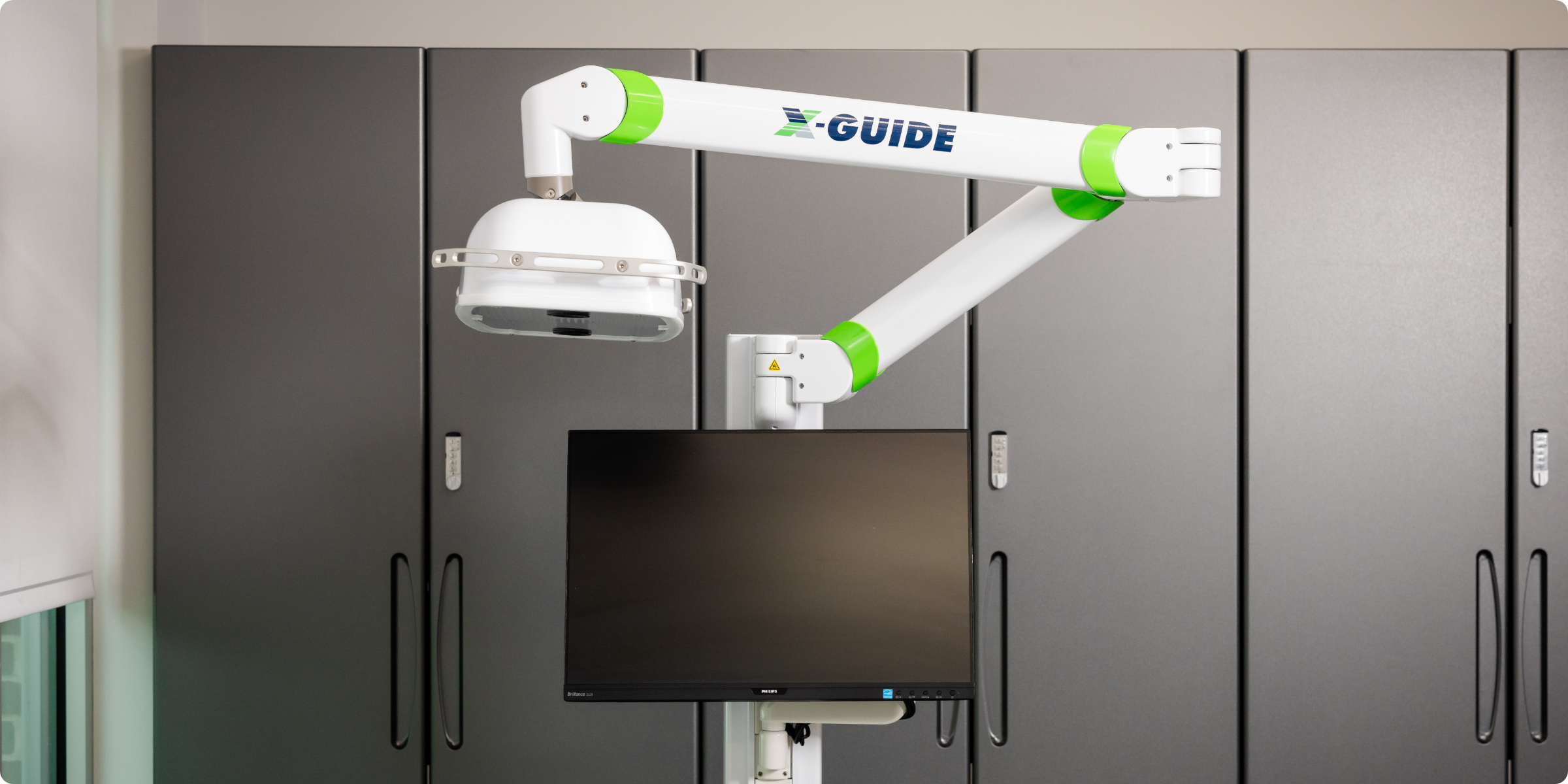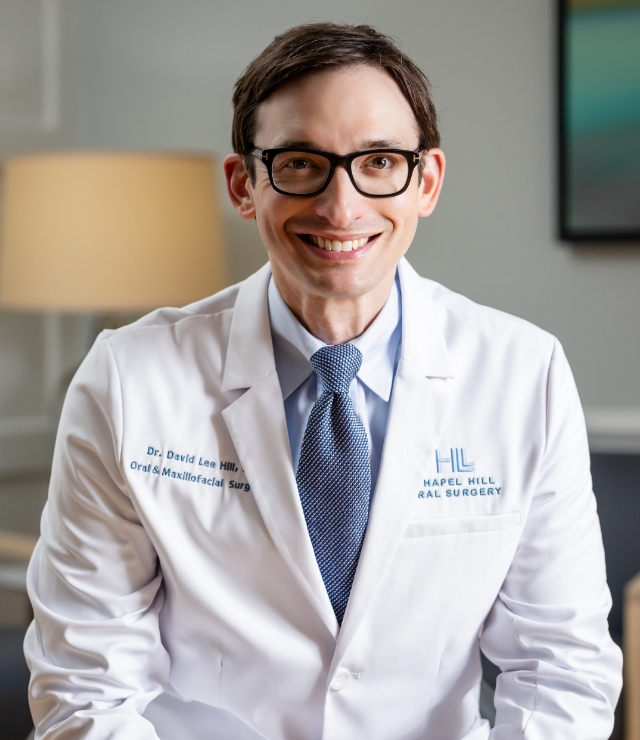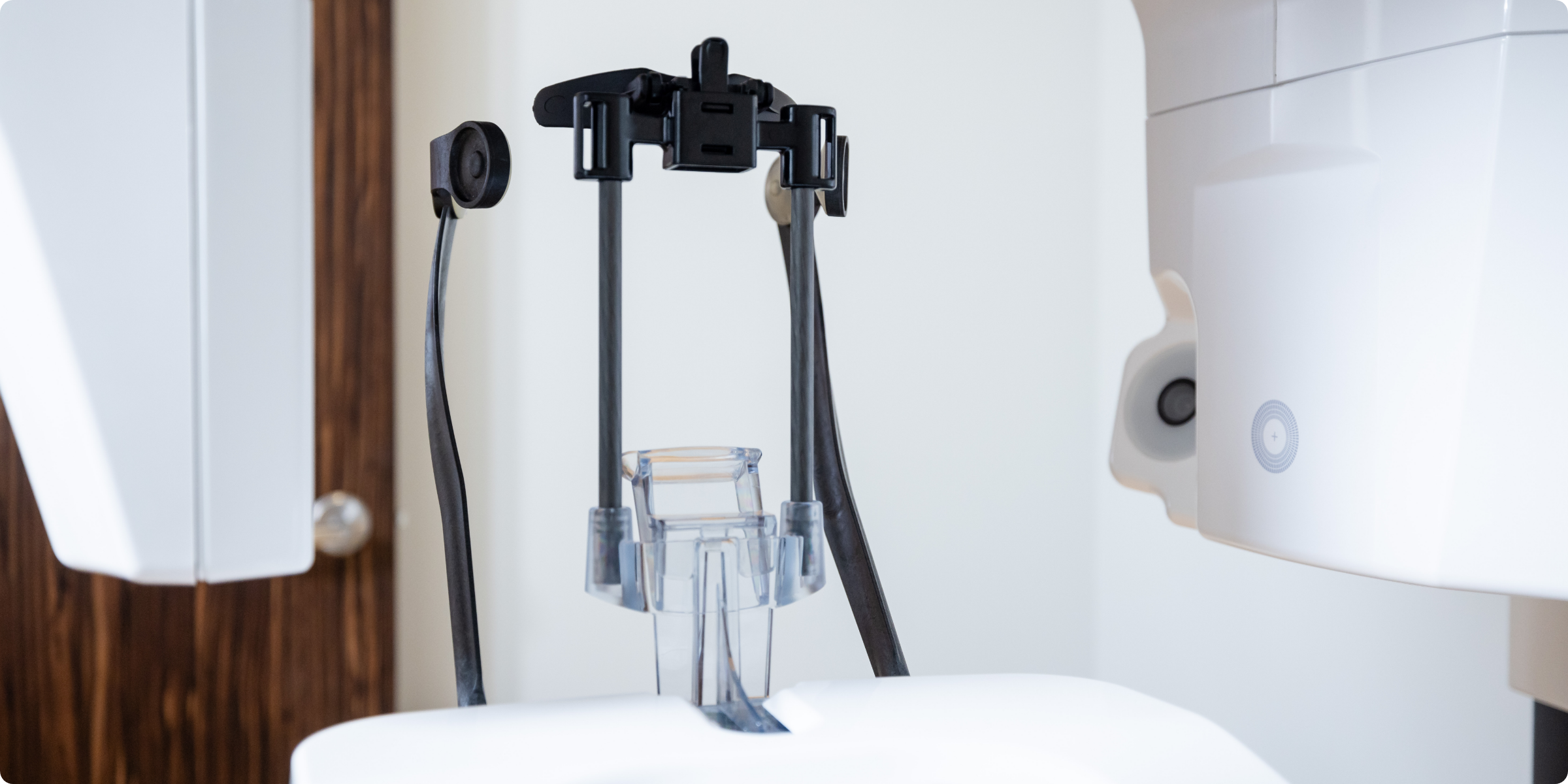At Chapel Hill Oral Surgery, we pride ourselves on being at the forefront of clinical technology. As technology advances and improves, it greatly enhances our ability to perform accurate procedures, prioritize patient safety, and promote the most efficient workflows. We are proud to highlight some of the technologies that make our practice cutting-edge.

X-Guide
With X-Guide® technology, we can not only obtain a three-dimensional view of the surgical site but also map out our procedures in advance. For dental implant and All-on-4® patients, this means enhanced precision, shorter surgical times, and even the possibility of incision-less procedures. X-Guide is a critical tool, allowing us to go into each implant surgery more fully prepared for optimal, predictable results.

Dr. David Lee Hill, Jr.
Dr. David Lee Hill, Jr. is a Board Certified Oral and Maxillofacial Surgeon who is passionate about providing his patients with outstanding care. He is dedicated to his clients’ comfort and to achieving long-lasting solutions for their oral surgical needs.
Platelet-Rich Fibrin (PRF)
Platelet-rich fibrin is a concentrated dose of platelets and growth factor derived from a sample of your own blood. This concentrate can then be injected or dispensed at the site of a surgery, such as a bone graft or implant placement, where it harnesses your body’s natural healing abilities. Dr. Hill uses the latest-gen PRF to provide our patients with faster wound healing and fewer complications during their recovery than less advanced techniques.
Nobel Biocare
Nobel Biocare™ makes highly regarded dental implant products, using innovative designs and high-quality materials to promote high success rates. Nobel Biocare’s product line includes immediate implant options, which allow Dr. Hill to provide dental implants and All-on-4 patients with the ability to leave their procedure with a full, confident smile.
Dr. Hill: Investing in Oral Health Technology
Dr. Hill has a proven track record in researching and promoting clinical innovations.
- He was an early adopter of X-Navigation Technologies and X-Guide in particular
- He gave a well-received presentation about X-Navigation Technologies at the 2021 AAOMS Meeting
- He has long been involved with the Nobel Biocare Center of Excellence
- He won an X-Guide Award for his work in using the All-on-4® treatment concept
Throughout his career, Dr. Hill has actively promoted clinical technologies that improve patient outcomes while promoting comfort, safety, and convenience.
See How Our Technology Works at Chapel Hill Oral Surgery
Dr. Hill’s early adoption and consistent advocacy for advanced clinical technology make our practice a preferred destination for oral surgery. Schedule a consultation to learn more about our technology and how it promotes a better patient experience. Contact Chapel Hill Oral Surgery at (919) 238-9961 today.





